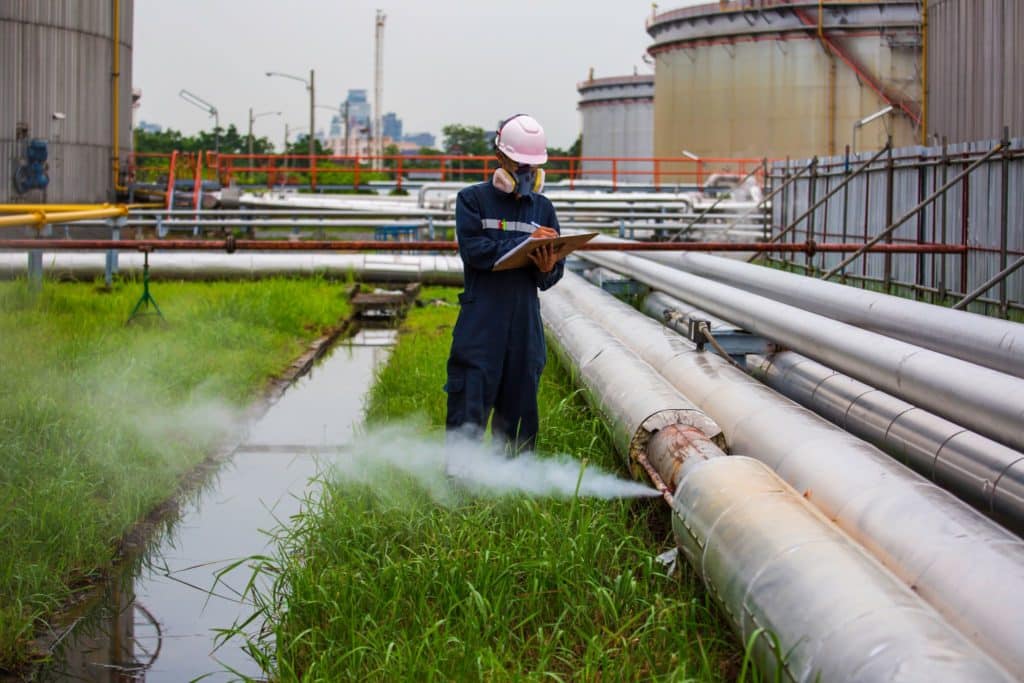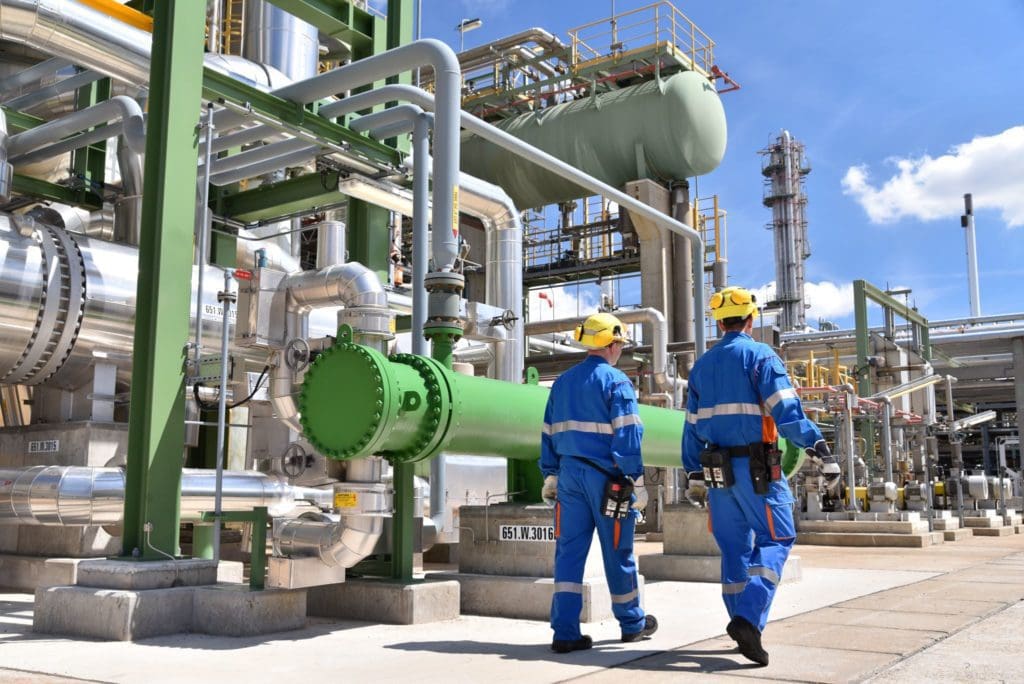What are Slug Catchers, and why are they important for oil and gas production?
A slug catcher is a piece of static equipment in the form of piping or vessel networking placed at the outlet of oil and gas pipelines or production flow lines carrying multiphase fluids. They are used to separate and eliminate slugs (a buildup of gas or liquid that flows through the pipeline, limiting the handling capacity of the entire unit) from the primary pipeline flow.
Slug catchers have sufficient buffer volumes to comfortably handle the expected slug from the flow. They support and protect the production equipment from potential abrupt failure that may result from slug flow in the oil and gas pipeline systems.
At Heartland Repair & Coatings, we understand the waste and equipment damage associated with the lack of slug catchers in a processing plant. Let’s examine what causes a slug, how slug catchers help in oil and gas processing, and the many different applications and types of slug catchers.
What Causes a Slug?
The bulk quantities of gas or liquid in the flow systems can be attributed to three major causes:
Terrain Slugging
When a flow line system passes through uneven terrain with severe dips and sudden rises, liquid phases are likely to accumulate in the lower levels. With time, the volumes at these lower elevations reach saturation and create a lot of pressure that pushes the liquid out, all at once, causing a slug.
Hydrodynamic Slugging
In a multiphase flow of gases and oil, gas tends to flow faster than the liquid, disturbing the liquid surface and flow. The relatively slow-flowing liquids form waves or ripples, eventually rising and blocking the outflow of gas, leading to a slug.
Pigging Slugs
Pigging is when a cleaning device is conveyed through the flow lines under pressure to clean, purge and inspect pipelines to ensure smooth fluid flow. These cleaning devices, also called pigs, are expected to push out sediments and other clogs out of the pipes without interrupting the pipeline activities. However, sometimes this process itself can lead to the formation of slugs.
Why Do You Need a Slug Catcher?
Slug catchers are commonly used in multiphase flow lines. They serve numerous functions, such as:
- protecting the equipment and downstream system from the potential damage associated with slug flow
- managing the high volumes of slugs generated in the flow systems
- helping to separate the liquid and gases in multiphase gas processing plants, enhanced by the density separation mechanism inside the slug catcher
- acting as temporary storage devices due to their relatively large volumes
- allowing the fluids to flow into downstream facilities smoothly and at a lower rate, minimizing the probability of slug formation in the downstream processing
Slug catchers can be used intermittently or permanently, depending on the frequency of slug generation and the type of slug catcher used. In fluid flow systems where slugging behavior is unpredictable, it is prudent to use permanent slug catchers.
Types of Slug Catchers
There are several types of slug catchers designed to suit different industrial requirements. The most common types include:
Finger Type Slug Catcher
This popular model, also known as the harp slug catcher, has numerous connected individual pipes that resemble fingers. The individual pipes have a relatively large diameter to withstand high fluid pressures. This catcher buffers the slug and reduces its velocity to minimize potential damage. They are relatively cheaper and have a liquid/gas separation section, intermediate section, and large storage section.
Vertical Vessel Type Slug Catcher
This slug catcher design is used where more gas components are expected in the slug than the liquid component. It uses the impingement baffle design to separate gas and liquid in the flow system.
Horizontal Vessel Type Slug Catcher
This type is similar to the vertical vessel type but is used when the liquid portion exceeds the gaseous portion. It also uses an impingement baffle to collect the liquid at the bottom of the vessel using gravitational force, allowing the gas to be released through the outlet.
Parking Loop Type Slug Catcher
A parking loop type, also known as a stored loop type, combines the features of both vessel types and finger types. It separates liquid and gas phases in the vessel and stores the separated liquid in loop-shaped fingers.
Hybrid Slug Catcher
A hybrid catcher is more advanced and uses highly efficient vessel separators. It has the largest finger pipes to maximize storage volume.
How to Choose the Right Slug Catcher
Before defining your slug catcher, consider several factors to ensure the best return on your investment. Some of these factors include:
Storage Capacity
The storage capacity of slug catchers is calculated in barrel (bbl) sizes. An expected input quantity of less than 1200 bbl indicates that vessel-type slug catchers may work best because they occupy less space and effectively handle such input. For larger barrel quantities, consider finger-type catchers.
Lead Time
Custom slug catchers can take as long as a year to manufacture based on various factors. Consider the urgency of your need when ordering and installing these pipeline components.
Available Space
Space is another vital consideration before purchasing slug catchers. Finger-type slug catchers are undoubtedly very effective but occupy a relatively large flat expanse, while vessel types occupy little space. The horizontal vessel types also occupy more surface area than the vertical ones.
Cost
Slug catchers are a considerable capital expense. The final design should take into account the material, shipping, and installation costs of all the possible configurations.
Catch the Best Fabrication
Slug catchers are essential components in natural gas, oil, or refinery plants. Without them, pipelines are prone to waste and likely to experience frequent load fluctuations and damage.
Heartland Repair & Coatings understands the necessity of quality slug catchers in fluid flow systems. We are certified to build and repair ASME code and non-coded vessels. Get in touch with us for your pressure vessel, process piping, or structural fabrication needs.

